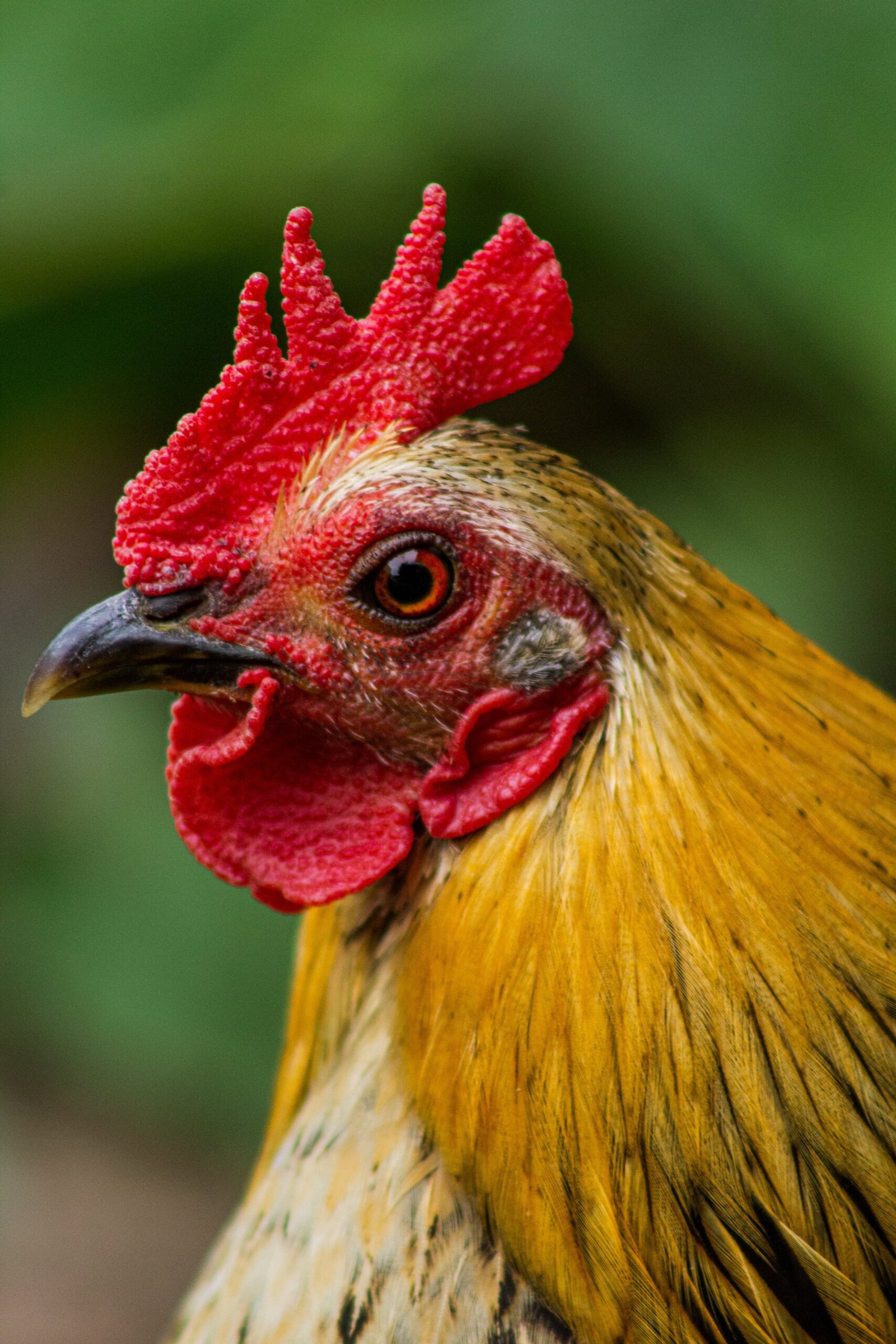
Have you ever wondered how altitude and high elevations affect the health of chickens? Altitude plays a significant role in the well-being of these feathered creatures, and understanding its impact is crucial for poultry farmers and enthusiasts alike. From the physiological changes in chickens to the potential risks and challenges they face in elevated areas, this article explores the intricacies of altitude and its relationship with chicken health. Let’s uncover the effects of altitude on these clucking companions and gain valuable insights into how to ensure their welfare in high-altitude environments.

Effects of Altitude on Chicken Health
Decreased Oxygen Levels
When chickens are exposed to high altitudes, the oxygen levels in the air are significantly lower than at sea level. This decreased availability of oxygen can have a profound effect on chicken health. Like any living organism, chickens require oxygen for various bodily functions and cellular processes. Therefore, when the oxygen levels decrease, it becomes challenging for chickens to obtain sufficient oxygen for their bodies.
Increased Risk of Hypoxia
Hypoxia refers to a condition where there is a deficiency in the amount of oxygen reaching the body’s tissues. At high elevations, chickens are at an increased risk of experiencing hypoxia. The limited availability of oxygen in the atmosphere makes it difficult for chickens to acquire enough oxygen to meet their metabolic needs. This can lead to severe health consequences as the cells and organs in the chicken’s body are deprived of adequate oxygen.
Respiratory Challenges
The respiratory system of chickens is particularly affected by high altitudes. As the oxygen levels decrease, chickens experience challenges in their respiratory processes. They may need to breathe faster and deeper to compensate for the reduced availability of oxygen. This increased respiratory effort can put additional strain on their lungs and respiratory muscles. As a result, chickens exposed to high altitudes are more prone to respiratory issues and can develop respiratory diseases.
Impact of High Elevations on Chicken Health
Temperature Fluctuations
High elevations are often associated with significant temperature fluctuations. These fluctuations can have adverse effects on chicken health. Extreme cold temperatures can lead to cold stress in chickens, causing their body temperature to drop, and consequently affecting their overall health. Conversely, high temperatures can result in heat stress, where chickens struggle to dissipate excess heat from their bodies. Fluctuating temperatures create an additional challenge for chickens, as they need to constantly regulate their body temperature to maintain optimal health.
Dehydration and Heat Stress
High elevations are not only characterized by temperature fluctuations but also by lower humidity levels. This combination poses a risk of dehydration and heat stress for chickens. Chickens lose water through respiration, excretion, and evaporation, and at high elevations, the dry air increases the rate of water loss. The reduced humidity levels make it more challenging for chickens to stay hydrated, and they may require a higher water intake to compensate for this increased water loss. Failure to maintain adequate hydration levels can lead to heat exhaustion and other heat-related health problems.
Reduced Immune Function
Exposure to high elevations can have a negative impact on the immune function of chickens. The body’s immune system plays a crucial role in defending against pathogens and maintaining overall health. However, high elevations can compromise the immune system of chickens. Studies have shown that exposure to high altitudes can decrease the production of immune cells and impair immune responses. As a result, chickens exposed to high elevations are more susceptible to infectious diseases and may experience delayed wound healing.

Respiratory Challenges at High Altitudes
Hypobaric Hypoxia
Hypobaric hypoxia is a condition that occurs when the atmospheric pressure decreases at high altitudes, leading to a lower partial pressure of oxygen. This condition exacerbates the already reduced oxygen levels, further impacting chicken health. Hypobaric hypoxia can result in a reduced oxygen-carrying capacity of the blood, making it difficult for chickens to effectively deliver oxygen to their tissues. This lack of oxygen can lead to a range of physiological issues and negatively affect various bodily functions.
Pulmonary Hypertension Syndrome
Pulmonary hypertension syndrome is a respiratory disorder that commonly affects chickens at high elevations. This syndrome is characterized by increased blood pressure in the pulmonary arteries, which supply the lungs. The combination of decreased oxygen levels and increased respiratory effort can cause the pulmonary arteries to constrict, leading to pulmonary hypertension. This condition disrupts the normal flow of blood and can eventually result in heart failure and impaired oxygenation of the blood.
Impaired Blood Oxygenation
In high-altitude environments, chickens may experience difficulties in oxygenating their blood. This impairment can occur due to a combination of reduced oxygen availability and respiratory challenges. Chickens may exhibit a lower oxygen saturation in their blood, meaning that a smaller percentage of hemoglobin molecules are bound to oxygen. Additionally, the respiratory rate of chickens may increase as they strive to acquire more oxygen. These factors can lead to cyanosis, a bluish discoloration of the skin and mucous membranes, indicating a lack of oxygen.
Effect of Decreased Oxygen Levels on Chickens
Reduced Energy Levels
When chickens are exposed to decreased oxygen levels at high elevations, their energy levels can be significantly impacted. Oxygen is vital for the production of energy in the cells through a process called cellular respiration. With lower levels of oxygen available, the efficiency of cellular respiration decreases, leading to reduced energy production. This can cause chickens to appear lethargic, weak, and less active than chickens at lower altitudes.
Poor Growth and Development
Chickens rely on a steady supply of oxygen to support their growth and development. Inadequate oxygen levels can hinder the normal growth processes in chickens. Without sufficient oxygen, the cells responsible for tissue growth and repair may not function optimally, resulting in stunted growth and delayed development. Additionally, decreased oxygen levels can negatively affect nutrient absorption, further compromising the overall growth and development of chickens.
Lower Reproductive Efficiency
Decreased oxygen levels at high elevations can also impact the reproductive efficiency of chickens. The lack of oxygen can interfere with the reproductive processes, affecting fertility rates and hatchability. Oxygen plays a crucial role in the development of embryos inside the eggs, and reduced oxygen availability can lead to developmental abnormalities or even embryo mortality. Consequently, chickens at high altitudes may experience reduced reproductive success and lower overall fertility rates.

Increased Risk of Hypoxia at High Elevations
Hypoxic Stress
The increased risk of hypoxia at high elevations can subject chickens to hypoxic stress. Hypoxic stress occurs when the body is exposed to low oxygen levels for an extended period, leading to physiological disturbances. The cells and tissues in chickens may struggle to function optimally under these conditions, affecting their overall health and well-being.
Impaired Cellular Function
Hypoxia can impair cellular function in chickens. As oxygen is crucial for cellular metabolism, reduced oxygen availability can disrupt the biochemical reactions that occur within the cells. This can lead to a decrease in ATP production, a critical energy molecule for cellular processes. The impaired cellular function can have widespread effects, affecting various organs and bodily functions in chickens exposed to high altitudes.
Organ Damage
Prolonged exposure to low oxygen levels can cause severe damage to organs in chickens. Organs such as the heart, brain, and lungs are particularly vulnerable to hypoxia-induced injuries. The reduced oxygen supply can lead to tissue damage, inflammation, and compromised organ function. Over time, the cumulative effects of hypoxia can contribute to long-term organ dysfunction and negatively impact chicken health.
Temperature Fluctuations and their Consequences
Cold Stress
At high altitudes, chickens are susceptible to cold stress due to the extreme cold temperatures. Cold stress occurs when the body’s core temperature drops below the optimal range. Chickens experiencing cold stress may exhibit shivering, decreased activity, and an increased metabolic rate as their bodies attempt to generate heat to maintain core temperature. Prolonged cold stress can weaken the chicken’s immune system, making them more vulnerable to diseases and other health issues.
Frostbite
Frostbite is a potential consequence of temperature fluctuations at high elevations. When exposed to extremely cold temperatures, chickens’ extremities, such as their combs, wattles, and toes, are particularly susceptible to frostbite. Frostbite occurs when these body parts freeze, leading to tissue damage. The affected areas may become blackened and ultimately result in tissue necrosis. Preventive measures such as providing adequate insulation and shelter can help minimize the risk of frostbite in chickens.
Heat Stress
High elevations not only bring cold temperatures but also high temperatures during certain seasons. Heat stress is a consequence of these temperature fluctuations, and chickens can suffer from it. Heat stress occurs when chickens are unable to dissipate excess heat from their bodies, leading to increased body temperature. Symptoms of heat stress include panting, decreased feed intake, increased water consumption, and droopiness. Heat stress can have severe health consequences, including organ failure and even death if not addressed promptly.
Dehydration and Heat Stress at High Elevations
Increased Water Requirement
The combination of high altitude and lower humidity levels increases the water loss through evaporation in chickens. This increased water loss can lead to dehydration. Chickens at high elevations require a higher water intake to compensate for this increased water loss and prevent dehydration. Adequate access to fresh water is crucial, and chicken keepers must ensure that water sources remain clean, easily accessible, and replenished regularly.
Electrolyte Imbalances
Dehydration caused by the arid conditions at high elevations can lead to electrolyte imbalances in chickens. Electrolytes, such as sodium, potassium, and chloride, are essential for maintaining cellular balance and function. Increased water loss can disrupt the electrolyte balance in chickens, negatively impacting their overall health. Providing electrolyte supplements or balanced electrolyte-rich diets can help restore and maintain proper electrolyte levels in chickens exposed to high elevations.
Heat Exhaustion
Dehydration and heat stress can culminate in heat exhaustion in chickens. Heat exhaustion occurs when the body’s thermoregulation mechanisms fail to effectively cool down the body, causing the core temperature to rise dangerously. Chickens experiencing heat exhaustion may exhibit symptoms such as rapid breathing, labored movement, lethargy, and even collapse. Prompt intervention is necessary to prevent further complications and potential fatalities. Proper ventilation, shading, and access to cool areas are crucial for protecting chickens from heat exhaustion.
Reduced Immune Function in Altitude-Exposed Chickens
Increased Susceptibility to Diseases
Exposure to high altitudes can compromise the immune function of chickens, making them more susceptible to diseases. The decreased oxygen levels and additional stressors at high elevations can result in a weakened immune response, leaving chickens vulnerable to opportunistic pathogens. Infectious diseases that would typically be easily managed by the immune system can become more severe and have a higher mortality rate in altitude-exposed chickens.
Delayed Wound Healing
Wound healing can be adversely affected in chickens exposed to high elevations. Oxygen plays a critical role in the wound healing process, supporting tissue repair and combating infection. However, reduced oxygen availability can lead to delayed wound healing in chickens. The lack of oxygen slows down the growth of new blood vessels and impairs the influx of immune cells to the wounded area, leading to prolonged healing times and an increased risk of complications.
Impaired Vaccine Responses
Vaccination is an essential tool in preventing various diseases in chickens. However, exposure to high altitudes can compromise the effectiveness of vaccines due to the reduced immune function. Chickens at high elevations may exhibit impaired vaccine responses, resulting in decreased protection against diseases. This underscores the importance of implementing additional disease prevention strategies and closely monitoring the health of altitude-exposed chickens.
Hypobaric Hypoxia and its Effects
Oxygen Deficiency in Blood
Hypobaric hypoxia, resulting from decreased atmospheric pressure at high altitudes, leads to oxygen deficiency in the blood. The reduced partial pressure of oxygen hinders the efficient exchange of oxygen and carbon dioxide in the lungs. As a consequence, chickens may experience lower oxygen saturation levels in their blood, limiting the oxygen available to vital organs and tissues.
Reduced Aerobic Capacity
Hypobaric hypoxia can significantly impair the aerobic capacity of chickens. Aerobic capacity refers to the ability of an organism to perform sustained physical activity using oxygen as a primary energy source. The decreased oxygen availability at high elevations hampers the ability of chickens to engage in activities that require higher energy expenditure, such as flying. Consequently, chickens may exhibit reduced stamina and endurance levels, impacting their overall performance and behavior.
Impaired Cellular Metabolism
Cellular metabolism relies on the availability of oxygen to properly convert nutrients into energy. Hypobaric hypoxia disrupts this process, impairing cellular metabolism in chickens. Reduced oxygen levels can lead to the inefficient breakdown of nutrients, affecting the production of energy and essential substances for cellular processes. As a result, chickens may experience metabolic imbalances and altered physiological functions due to the inadequate oxygen supply caused by hypobaric hypoxia.
Impaired Blood Oxygenation at High Elevations
Reduced Oxygen Saturation
Exposure to high elevations can lead to reduced oxygen saturation in chickens’ blood. As the oxygen levels decrease at higher altitudes, a smaller percentage of hemoglobin molecules can bind to oxygen. This results in the blood carrying a lower amount of oxygen to the body’s tissues and organs. Reduced oxygen saturation is a significant concern as it can impair vital bodily functions and contribute to the overall health challenges faced by chickens at high altitudes.
Increased Respiratory Rate
To compensate for the decreased oxygen availability, chickens exposed to high elevations may exhibit an increased respiratory rate. The higher respiratory rate allows chickens to breathe in more frequently, attempting to acquire sufficient oxygen to meet their metabolic needs. However, the increased respiratory effort places additional strain on the respiratory muscles and can lead to respiratory fatigue and compromised lung function over time.
Cyanosis
Cyanosis is a visible manifestation of impaired blood oxygenation in chickens at high elevations. As the oxygen saturation decreases, the skin and mucous membranes may develop a bluish discoloration known as cyanosis. Cyanosis is a clear indication of inadequate oxygen levels in the blood and serves as a visual cue that chickens may be experiencing significant respiratory and circulatory challenges. It is crucial to closely monitor chickens exhibiting cyanosis and seek appropriate veterinary care to address the underlying issues.
In summary, the impact of altitude and high elevations on chicken health is widespread. Chickens face numerous challenges, including decreased oxygen levels, increased risk of hypoxia, respiratory difficulties, temperature fluctuations, dehydration, reduced immune function, and various physiological consequences. Careful considerations and proactive measures are necessary to ensure the well-being and optimal health of chickens in high-altitude environments.







